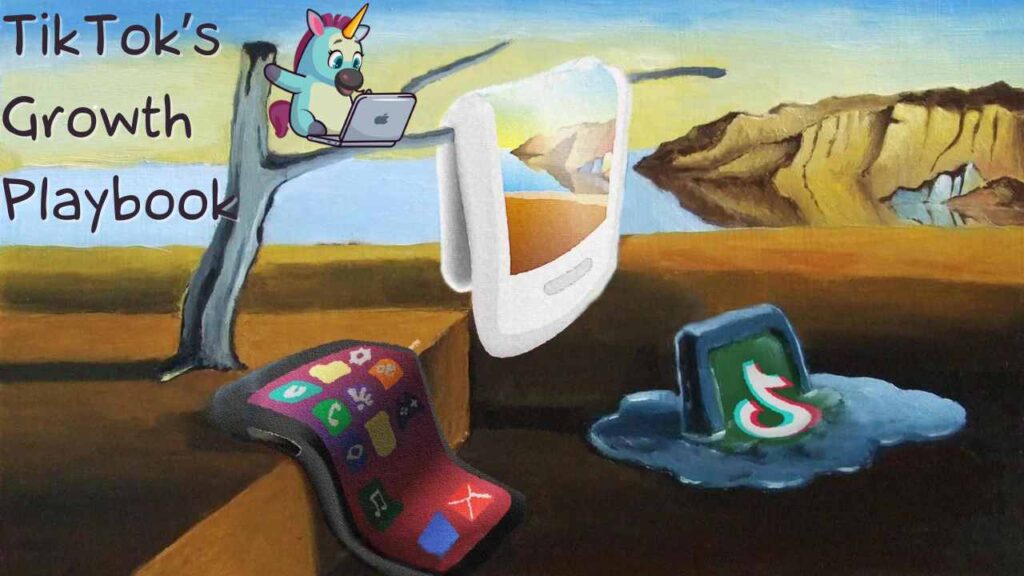
Hi there, unicorns!
Today, we’re revealing TikTok’s growth playbook – the short-form video platform that’s revolutionized how people consume and create content.
From its origins as a niche app for teens to a cultural juggernaut with over 1 billion users, TikTok’s case study is a must-read about digital growth.
In this analysis, we’ll share the strategies and innovations that led TikTok to social media stardom, examine its impact on global trends, and explore how it navigated the challenges.
Ready to decode the algorithm behind TikTok’s success?
Let’s jump into the world of 15-second fame and viral dances! 🕺📱
The Idea💡

In 2016, Zhang Yiming, the founder of ByteDance, saw an opportunity to revolutionize content consumption in the mobile era.
Building on the success of Toutiao, ByteDance’s news aggregator, Zhang imagined an AI-powered platform to deliver personalized, bite-sized video content.
The core concept was brilliantly simple:
Create an app where users could easily produce, share, and consume short videos set to music.
By focusing on brevity, creativity, and AI-powered content delivery, Zhang aimed to capture the fleeting attention of the mobile-first generation.
This idea evolved into Douyin for the Chinese market, and later TikTok for the global stage, redefining how we create and consume content in the digital age.
The Problem 😫
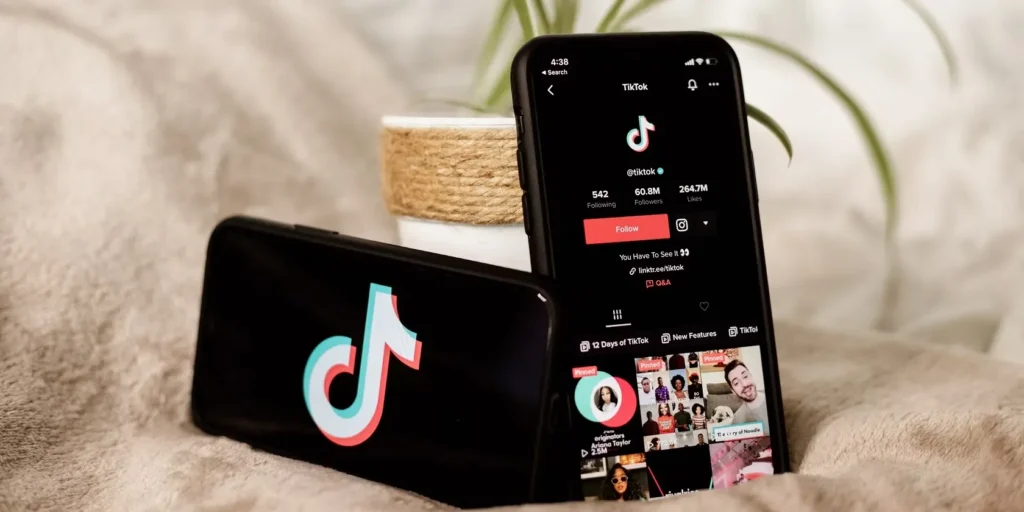
The truth is, TikTok didn’t solve a major problem—they revolutionized content discovery and consumption.
Traditional social media platforms like Facebook, Instagram, and Twitter relied heavily on social graphs.
Without friends or followers, your feed would be empty.
This led to the infamous “7 friends in 10 days” metric at Facebook—users needed a basic network to find value.
TikTok recognized an opportunity in this model’s limitations.
Many users felt overwhelmed by the pressure to build and maintain networks, curate perfect feeds, or actively search for interesting content.
Moreover, existing platforms often suffered from “context collapse” as users’ networks grew, diminishing the overall experience.
TikTok’s innovation was to flip this model on its head, prioritizing content discovery over social connections.
They bet on users’ desire for effortless entertainment and the allure of potential virality—and it paid off spectacularly.
The MVP 🛠️
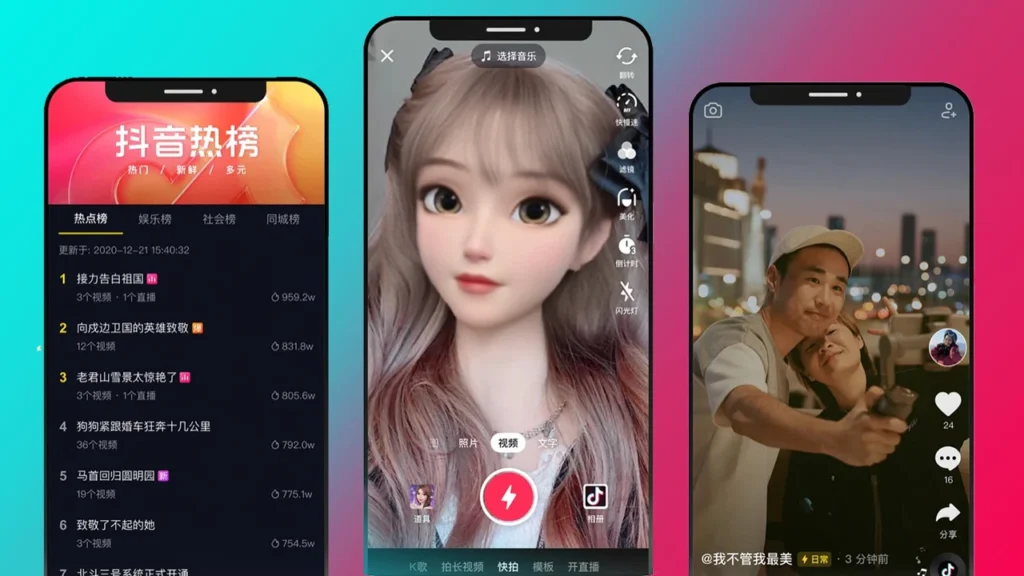
ByteDance’s journey to TikTok began with Douyin, their short-form video app for the Chinese market.
Launched in September 2016, Douyin was the true MVP that would eventually evolve into TikTok.
The initial version of Douyin was remarkably simple:
- A feed of 15-second videos
- Basic video creation tools with filters and effects
- A vast library of music clips for users to lip-sync or dance to
- An AI-powered recommendation engine
Crucially, Douyin used ByteDance’s existing AI capabilities from Toutiao, their news aggregator app.
This allowed for personalized content delivery from day one, even without an extensive user network.
Product-Market Fit 🎯
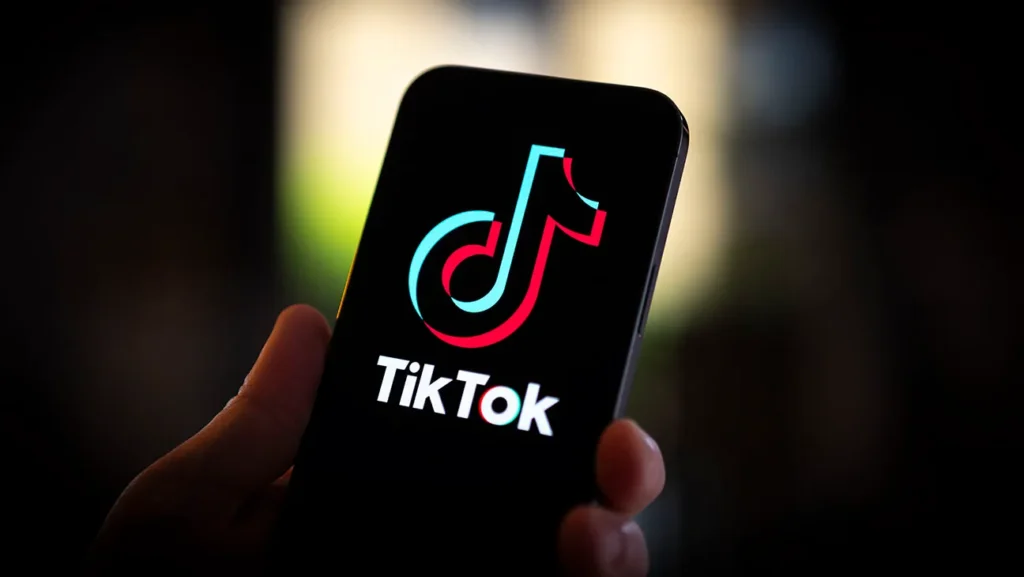
ByteDance’s journey to product-market fit with TikTok was a multi-stage evolution, building on lessons from their previous apps.
Toutiao proved the power of AI-driven content recommendation, while Douyin demonstrated the appetite for short-form video content in China.
However, the real breakthrough came with the acquisition and integration of Musical.ly.
By merging Musical.ly’s user base and features with Douyin’s powerful AI algorithm, ByteDance created TikTok – a platform that perfectly captured the zeitgeist of mobile-first, short-form video content.
The proof of product-market fit was explosive:
- Rapid user adoption: TikTok hit 100 million users within a year of the Musical.ly merger.
- Viral growth: The app became #1 in app stores across 40+ countries.
- Engagement metrics: Users spent an average of 52 minutes daily on the app.
- Cultural impact: TikTok-driven trends and challenges became global phenomena.
This combination of quantitative growth and qualitative impact solidified TikTok’s product-market fit, establishing it as a dominant force in social media.
Positioning & Branding 🎨📐
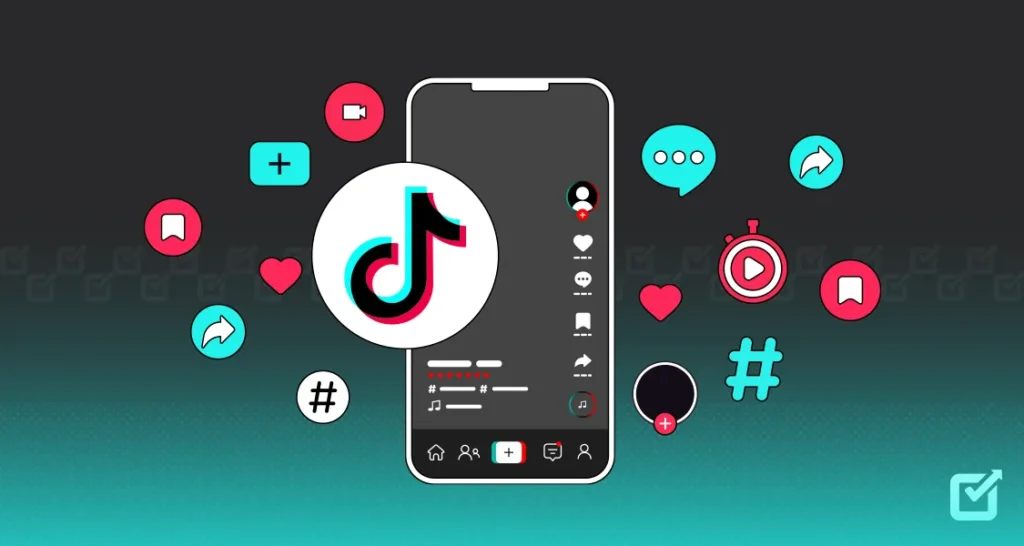
TikTok’s positioning was crystal clear from the start:
They were the platform for creative self-expression through short-form video.
Unlike other social media giants, TikTok positioned itself as a stage where anyone could become a star, regardless of their follower count.
Their branding was vibrant, youthful, and dynamic.
The logo, a musical note against a background reminiscent of a glitching screen, perfectly encapsulated the app’s essence:
Music-driven, digital, and slightly chaotic.
TikTok’s messaging emphasized creativity, authenticity, and the power of viral moments.
Taglines like “Make Your Day” and “Real People, Real Videos” reinforced the idea that TikTok was a platform for genuine, unfiltered content.
Crucially, TikTok’s brand wasn’t just about consuming content, but creating it.
They positioned their easy-to-use video tools as a gateway to creativity for everyone, democratizing content creation in a way no platform had before.
This positioning resonated strongly with Gen Z and millennials, establishing TikTok as the go-to platform for quick, engaging, and often viral content.
Pricing 💰📊
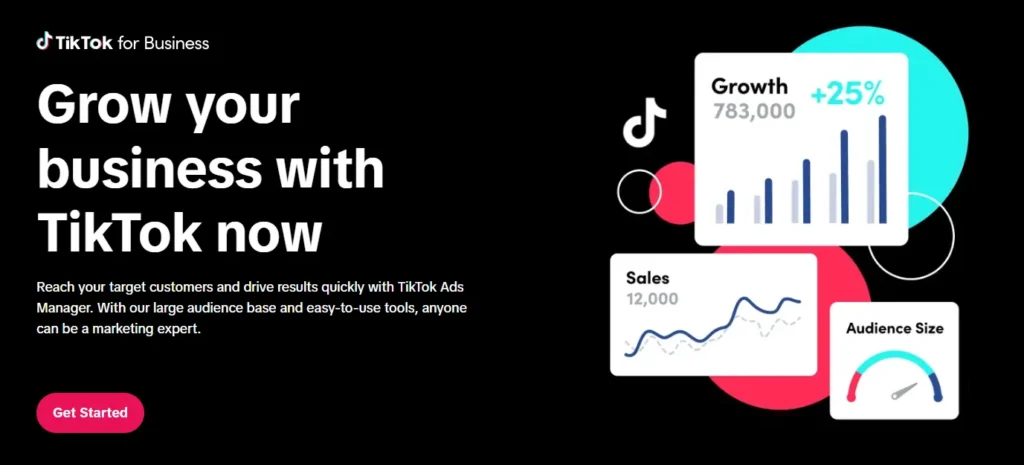
TikTok’s core app is free for users, a strategy crucial for its explosive growth.
However, ByteDance has implemented a multi-faceted approach to monetization:
- Advertising: TikTok offers various ad formats, including in-feed ads, branded hashtag challenges, and brand takeovers. This is their primary revenue source.
- TikTok Shop: In select markets, TikTok has integrated e-commerce features, allowing users to purchase products directly through the app.
- Creator Fund: TikTok pays popular creators directly, incentivizing content production and retention of top talent.
- Virtual gifts: During livestreams, viewers can purchase and send virtual gifts to creators, with TikTok taking a percentage.
- Music licensing: TikTok has deals with major record labels, paying for the rights to use their music in videos.
This model allows TikTok to maintain its free-to-use status for the general public while generating revenue from businesses, brands, and highly engaged users.
The approach varies by region, reflecting local regulations and market conditions.
Acquisition 🚀
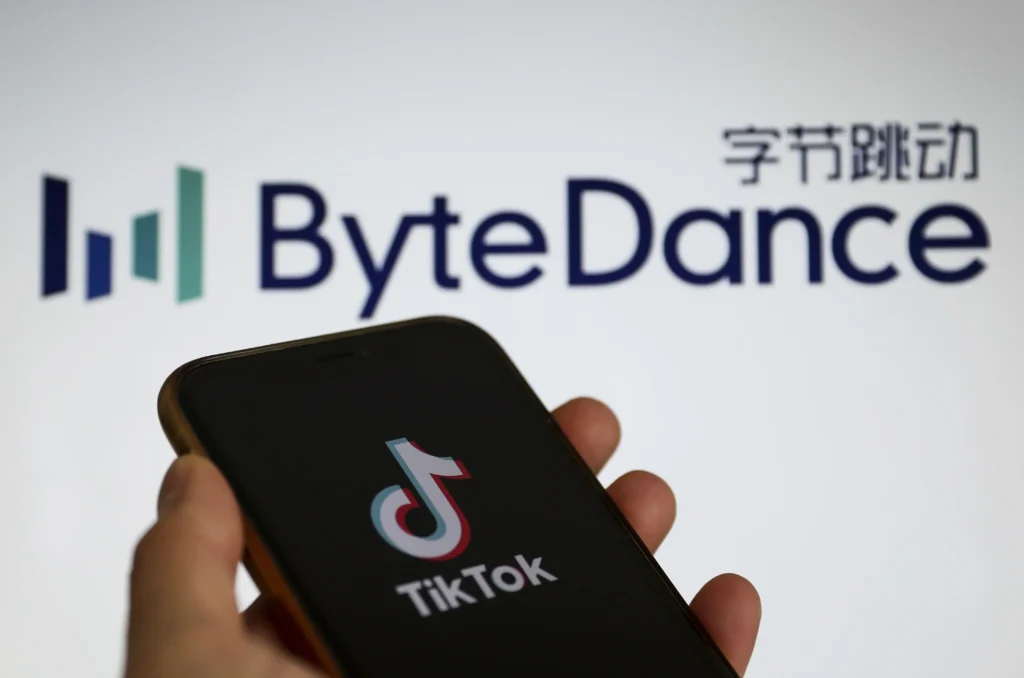
TikTok’s acquisition strategy focused on aggressive growth, combining both traditional and innovative approaches:
- Massive Paid Acquisition: ByteDance leveraged its deep pockets, spending a mindblowing $3M per day on Facebook and Instagram ads to rapidly build TikTok’s user base. This flood of marketing helped TikTok quickly become the most downloaded app in the US within just two months.
- Strategic Merger: The acquisition and integration of Musical.ly was a game-changer, instantly giving TikTok access to 100 million active users and a strong foothold in the US market.
- Cross-Promotion: TikTok used ByteDance’s existing user base from apps like Toutiao and Douyin, cross-promoting to millions of users already familiar with their ecosystem.
- Viral Sharing Mechanisms: TikTok’s share panel made it incredibly easy to post content on other platforms, each shared video serving as a branded advertisement for TikTok.
- Influencer Partnerships: TikTok paid popular influencers to create and promote content, tapping into their existing fan bases.
- Global Expansion: Unlike most apps that expand gradually, TikTok launched simultaneously in over 150 countries, quickly establishing a global presence.
- Localization: TikTok invested heavily in localizing content and features for different markets, ensuring cultural relevance.
- Creator Focus: By making it easy for anyone to create content and potentially go viral, TikTok turned users into creators and creators into acquisition channels.
This multi-faceted approach allowed TikTok to achieve unprecedented growth, reaching 1 billion monthly active users faster than any other platform in history.
Growth Loops 🔄🚀
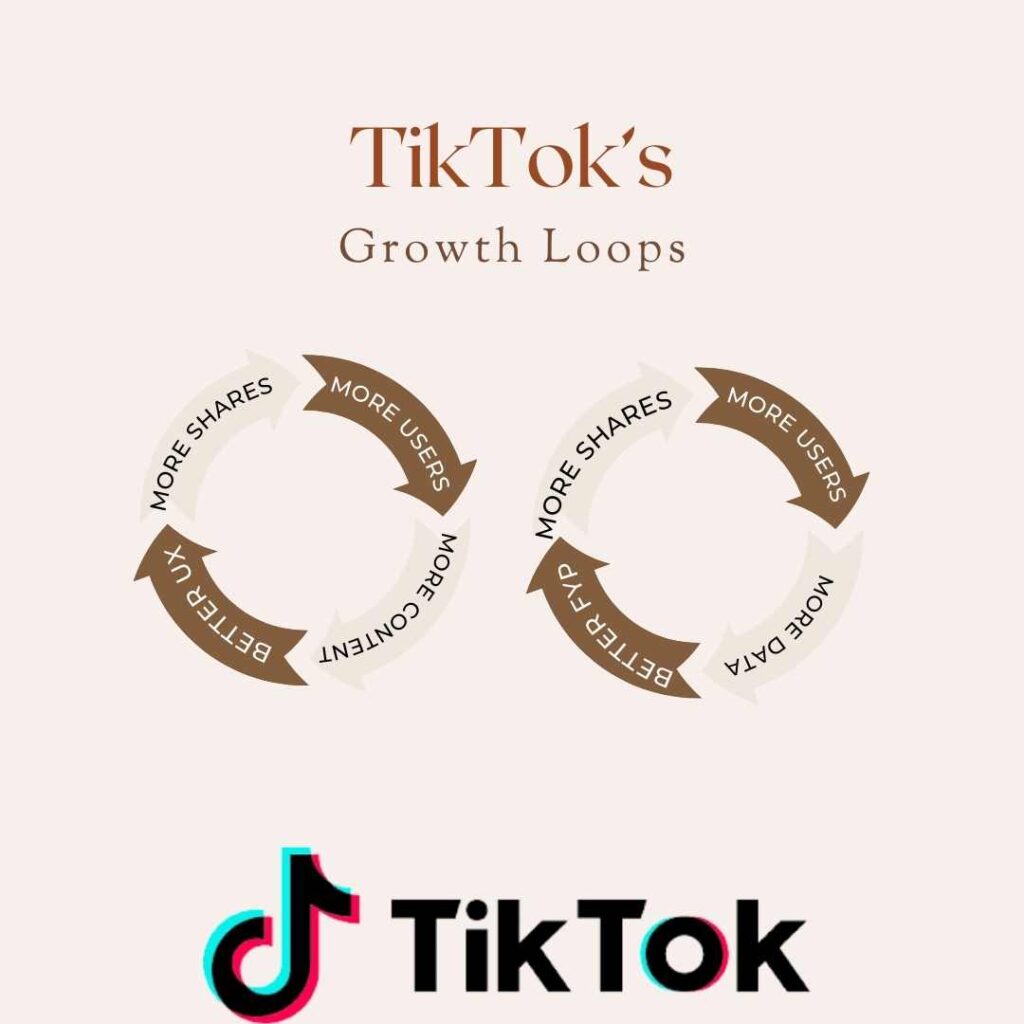
TikTok’s growth is powered by two interconnected loops:
A content loop and a data loop, creating a powerful network effect.
Content Loop:
- More creators join TikTok
- More diverse content is produced
- Users find more engaging content
- User engagement increases
- Platform becomes more attractive to new creators
- Cycle repeats, amplifying growth
Data loop:
- Increased user engagement generates more data
- AI algorithms improve with more data
- Better content recommendations to users
- User satisfaction and time spent on app increases
- More data generated from increased usage
- Cycle repeats, continuously improving the user experience
These loops create two types of network effects:
- Standard network effect: More users and creators make the platform more valuable for everyone.
- Data network effect: More user data makes the AI smarter, improving the product for all users.
Activation 🎬🔥
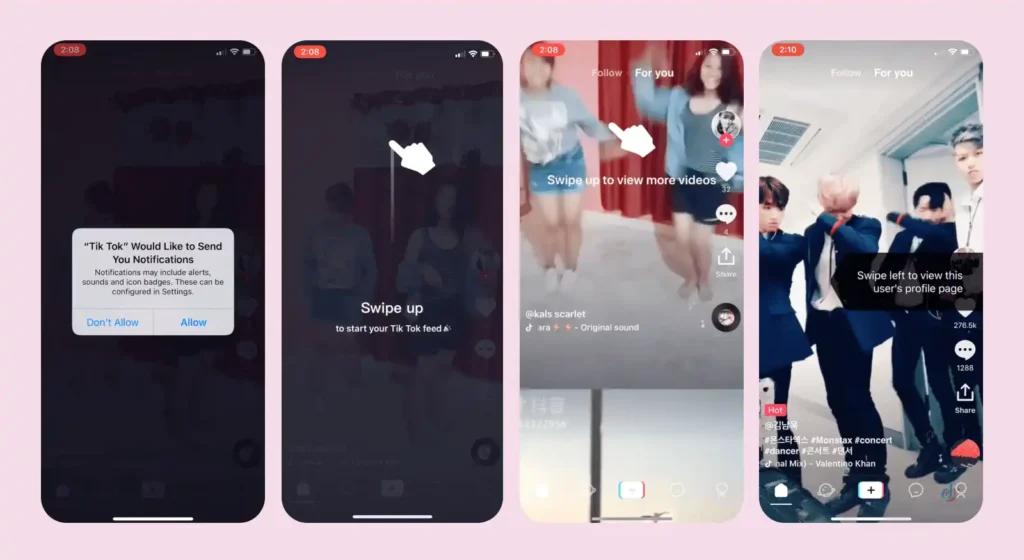
The app offers multiple single-sign-on options, reducing friction during sign-up.
Users can optionally provide their interests, but it’s not required for a personalized experience.
Within seconds of opening the app, users are watching content tailored to their preferences.
The onboarding tutorial is minimal, consisting of a single instruction:
Swipe up for more videos.
This simplicity allows users to learn by doing, as the app implicitly gathers data on their preferences through their behavior rather than explicit questionnaires.
Unlike other social platforms, TikTok doesn’t rely on an existing social graph, allowing instant gratification without needing to connect with friends first.
This streamlined process ensures users quickly understand and enjoy TikTok’s key features, maximizing the chances of continued engagement.
Retention 🔒❤
TikTok’s retention strategy has proven remarkably effective, with monthly retention rates reaching an impressive ~65%, outpacing Instagram’s 56%.
The app’s addictive content algorithm and engagement features have led to TikTok being used by 30% of global internet users, with US adults spending an average of 53.8 minutes per day on the platform.
TikTok’s content-first approach sidesteps this issue, unlike traditional social media platforms that suffer from “context collapse” as users accumulate too many connections.
Users don’t need to follow accounts to enjoy personalized content, reducing the fatigue of managing a social graph.
This “anti-social” approach contributes to TikTok’s staying power, as the app’s value doesn’t diminish when users add too many friends or followers.
TikTok’s “For You” page continuously adapts to user preferences, serving an endless stream of tailored, bite-sized videos.
This, combined with gamification elements like challenges and trending hashtags, keeps users engaged.
TikTok’s finely-tuned notification system re-engages users without being overly intrusive, solidifying the app’s place in users’ daily digital routines and driving consistent, long-term usage.
Referral 📣🎉
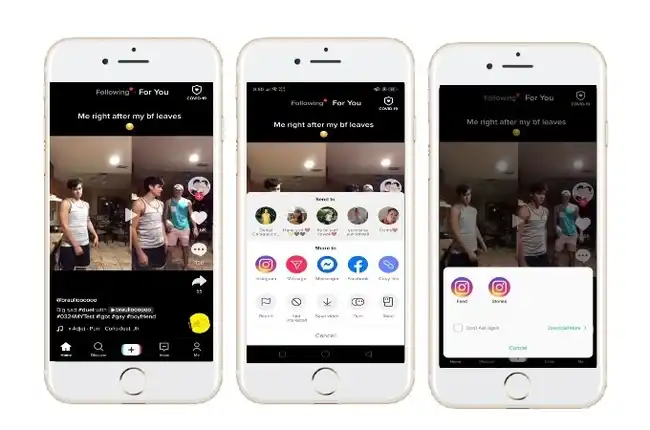
Unlike other social media platforms, TikTok’s share panel is extensive and user-friendly, prioritizing one-tap out-of-app sharing across multiple platforms.
A side-by-side comparison with Instagram’s share panel reveals TikTok’s advantage:
While Instagram dedicates minimal space to external sharing, TikTok’s panel offers a scrollable list of sharing options tailored to the apps on the user’s device.
This makes posting a TikTok to your Instagram story, for instance, just a single tap away.
Every shared video acts as a mini-advertisement, thanks to the TikTok watermark.
This “ingredient branding” approach ensures that even when content is shared elsewhere, it still promotes TikTok.
The app also promotes user-generated challenges and trends, encouraging users to involve their friends in content creation.
This organic, content-driven referral mechanism, combined with TikTok’s algorithm that boosts high-engagement videos, creates a powerful cycle of content creation, sharing, and new user acquisition.
Challenges 😰
TikTok’s rise hasn’t been without significant hurdles.
The platform faces intense scrutiny over data privacy and national security concerns, particularly due to its Chinese ownership.
Several countries, including India and the United States, have implemented or considered bans on the app.
TikTok also grapples with content moderation issues, balancing free expression with the need to curb misinformation and inappropriate content.
The app’s addictive nature has raised concerns about its impact on mental health, especially among younger users.
Regulatory pressures continue to mount, with governments worldwide pushing for greater transparency and control over TikTok’s operations.
The company’s efforts to distance itself from ByteDance and implement data localization have yet to allay these concerns fully.
Despite these challenges, TikTok continues to innovate and adapt, striving to maintain its position as a leading social media platform.
Lessons Learned 🎓
TikTok’s journey from a Chinese lip-syncing app to a global social media phenomenon offers some killer insights for aspiring entrepreneurs and growth pros:
Lesson 1: Innovate on Existing Models
TikTok didn’t invent short-form video, but they perfected it by learning from predecessors like Vine and Musical.ly.
The takeaway? Don’t be afraid to enter a crowded market if you can significantly improve the user experience.
Lesson 2: Leverage AI and Data
TikTok’s powerful algorithm demonstrates the potential of data network effects in creating a compelling user experience.
The takeaway? Invest in AI and machine learning capabilities early – they can become a significant competitive advantage.
Lesson 3: Focus on Creator Empowerment
By prioritizing tools and features for content creators, TikTok built a self-sustaining ecosystem of engaging content.
The takeaway? In platform businesses, empowering your supply side can drive exponential growth on the demand side.
Lesson 4: Think Global, Act Local
TikTok’s simultaneous launch in multiple countries, coupled with localized content strategies, fueled its international success.
The takeaway? Consider a global strategy from day one, but be prepared to adapt your product to local markets and cultures.
Lesson 5: Balance Growth with Responsibility
TikTok’s rapid rise has been accompanied by intense scrutiny over data privacy and content moderation.
The takeaway? As you scale, proactively address potential ethical and regulatory concerns. It’s easier to build trust from the start than to regain it later
And there you have it! 🎉
TikTok’s rise from a niche lip-syncing app to the top social media platform proves the power of innovation, data-driven decision-making, and user-centric design.
From its addictive algorithm to its creator-focused approach, TikTok has rewritten the rules of social media engagement and growth.
But as we’ve seen, rapid growth comes with its own set of challenges.
Privacy concerns, regulatory scrutiny, and content moderation issues remind us that sustainable success requires more than just a killer app and a big user base.
Found this fascinating?
Spread the love and share with your fellow growth nerds!
Till next time, keep scrolling… err, growing! 📱🚀

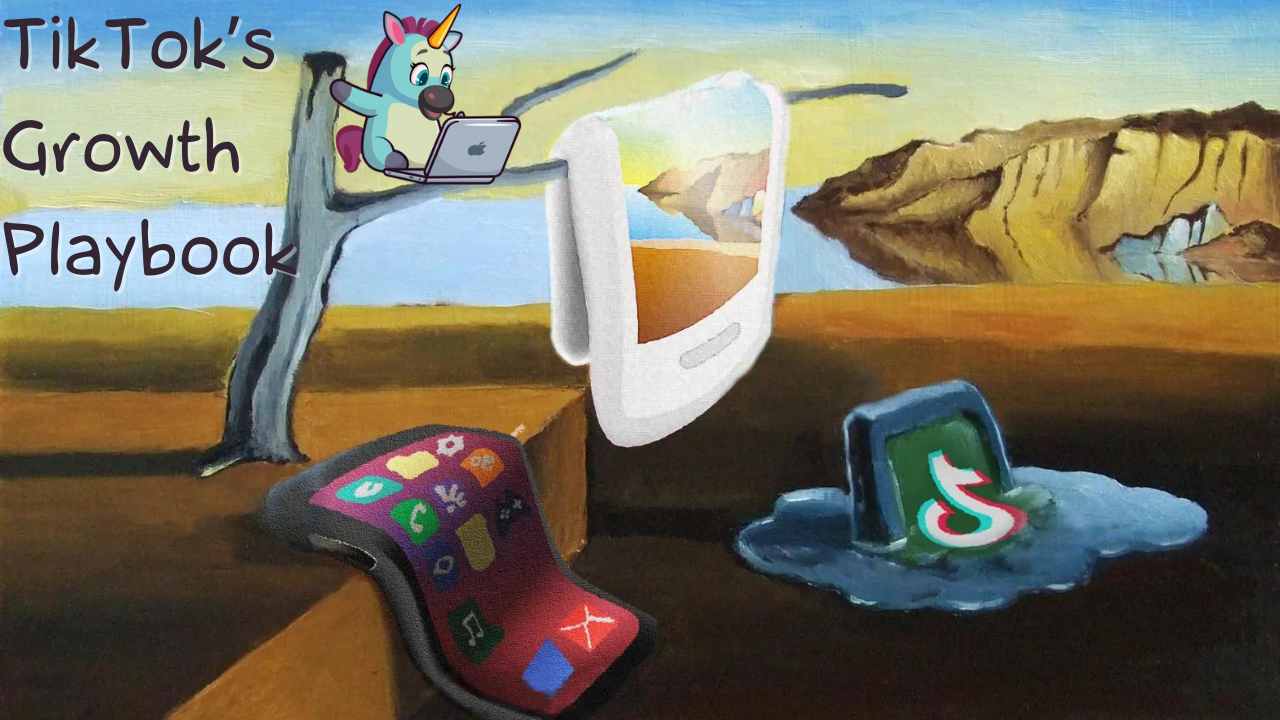

Leave a Reply